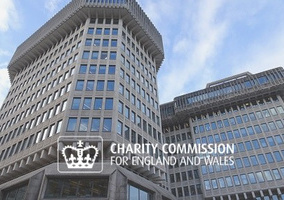Faith-based charities represent every part of the charity sector – from large international NGOs to small local synagogues, and ranging from educational charities to those working to reduce poverty and homelessness in local communities. So, when the reporting requirements encourage or require certain disclosures, be it public benefit, environment, risk, governance, reserves or other, it is important to return to your roots and determine how each of these areas contain processes, policies and strategies that align with your wider mission.
Inevitably, some areas will be more prevalent, and others might be largely irrelevant, regardless of how much press attention there is in society as a whole. This can be controversial – for example, many educational charities think that they must disclose safeguarding as a significant risk to the charity, whereas others believe that as their policies, procedures, safeguards and practices are robust, with no issues past or present, that disclosures only draw further attention to an area that does not need such attention.
Charities should consider (a) does the reporting align with internal focus and attitudes on the issue (i.e. is it reported high on the risk register and are mitigating actions or plans significant in terms of board and senior management attention), and (b) is the reporting aligned to the website, what the key stakeholders of the charity would expect, and what message is given by including or excluding the area from formal statutory reporting. There is a tendency that when it comes to risk, charities over-disclose and forget to ask the “so what” question, but equally, under-disclosing can imply complacency.
The environment
Reporting on the environment is interesting as most charities currently have no obligation to report on it. The requirements under s.172 of the Companies Act, and Streamlined Energy and Carbon Reporting (SECR) only apply to large charities. However, all organisations, both charitable and non-charitable, face pressure to report. It is worth considering the below:
- How do the initiatives being proposed fit into the overall strategy of the charity?
- What is the perception of key funders? If the perception is that the charity should be more positive with what it is disclosing or what it is doing, then that should be considered by the trustees and reported as appropriate.
- How is the environment linked to the charitable objects of the charity? If the objects are, for example, “advancement of the Roman Catholic faith” and there is a call to action by the church, then the expectation is that a key priority of the charity needs to include focus on sustainability, to include environmental sustainability.
Once you have considered the importance of areas such as environmental sustainability to the charity, you will need to take stock of where you are now. Church-based charities, such as those with mosques, synagogues and churches, will often find that the most environmentally challenging area is the property stock. Other charities, such as international grantmakers, will have additional challenges as they will need to consider the role of beneficiaries of grants.
Taking stock of where you are as a charity (i.e. your footprint) is important to then be able to measure the impact of actions taken to improve that footprint. The more important it is to report on your charity’s environmentally sustainable strategy, the more important it is to have auditable statistics and measures to report on.
Finally, getting the balance right is important – your trustees’ report needs to be well balanced, considering all aspects of charitable work. How you prioritise your work to deliver your strategy should be the key driving force of reporting in your trustees’ report. Many charities use supplemental reports for matters where a few paragraphs are not enough and by crossreferencing to that material you will highlight where the “evidence” for your statements in your trustees’ report can be found.
The trustees’ report for most charities is now getting close to or exceeding 100 pages and the cause of this is not the regulations, but the way the regulations have been interpreted. With the growing pressure on faith-based charities to align their strategies to religious teachings and societal expectations, the content in most trustees’ reports may no longer be in balance. Now is the time to review and reposition as future SORPs or Financial Reporting Standards are unlikely to guide you prescriptively, but instead will encourage you to better communicate with your audience.
Adam Halsey is partner and head of charities at haysmacintyre











